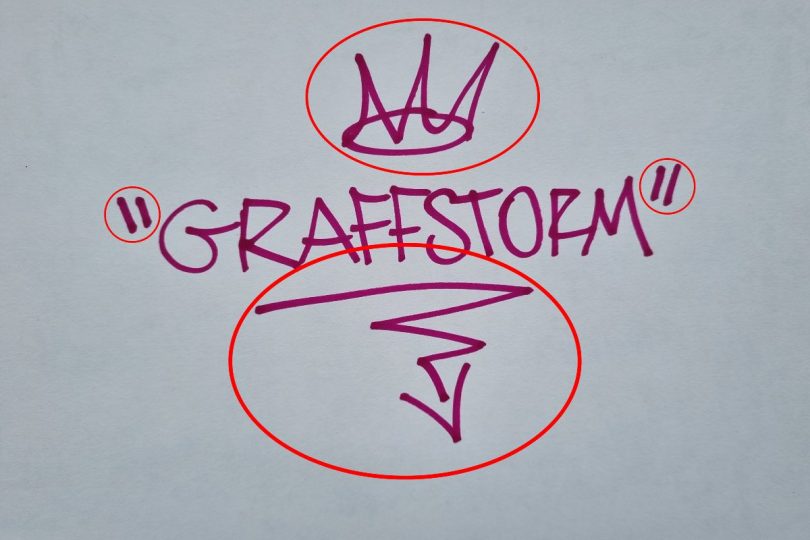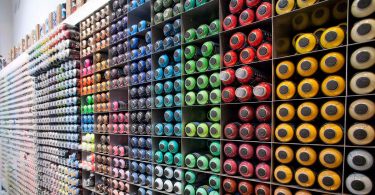I’ve made a lot of mistakes in my years of graffiti writing.
And that’s totally normal – every writer does. They say you learn from your mistakes. This same rule applies to graffiti too.
But if you’re making these mistakes often, it’s probably not helping you make a name for yourself in graffiti. They might be what’s holding you back from being respected by other writers.
So here’s a list of the top 12 mistakes I’ve seen throughout my years, and how you can fix them.
1. Using the wrong caps
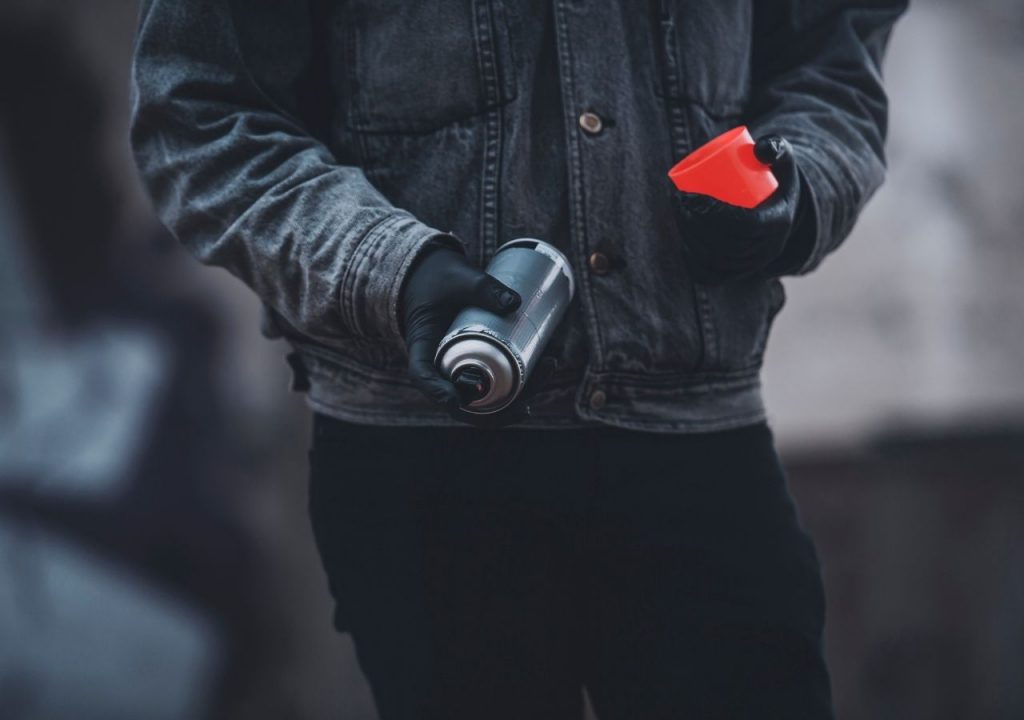
New writers might not be familiar with all the different types of graffiti caps available to them.
Most spray paint comes with caps already attached. The problem is, however, that some of these can be skinny caps, which aren’t very useful if you’re trying to cover large areas for a fill-in or background.
On the other hand, popular cans like Montana Black come stocked with a fat cap, which is difficult to create thin lines with. Especially for new writers.
Make sure you’re using the right caps.
Use skinny caps when you need fine lines, for example, for details and outlines.
Use fat caps when you need to fill large areas, do flare tags and thick outlines. Or just any time that you gotta paint fast.
Pick up a big pack of caps, like the Montana Bulk Cap Set. Find the caps you like the most and stick to them.
2. Not adapting to the space

A big mistake I see many new writers make is not adapting to the size of the space they’re painting.
Going too big, too small or just generally not using the space well is a sign of a beginner writer.
Even worse is if your piece goes over an existing one because you’ve gone too big, or if you haven’t left enough space for someone else to piece by you. Chances are, you’ll get gone over.
It can take a while to learn, especially if you’re painting under pressure, but make sure your piece fits nicely into the spot.
3. Copying a famous writer’s name
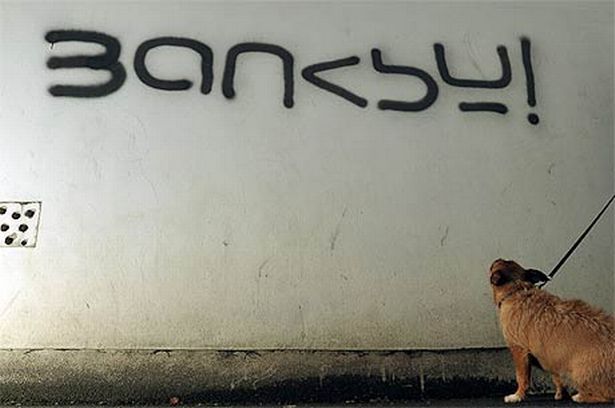
Okay, maybe Banksy is an extreme example. But nonetheless, you shouldn’t be copying the name of a famous graffiti writer if you want to be taken seriously.
Even names like Ghost, Risk, and Task are played out. So many people have written these over the years that they’ve become boring and generic. Leave it to the OG’s to paint these.
Instead, choose a name that’s unique. One the people are gonna look at and remember. Not one that other people are gonna roll their eyes at because they’ve seen it a hundred times before.
If you’re struggling with ideas, take a look at my post on how to choose a graffiti name.
4. Copying another writer’s style
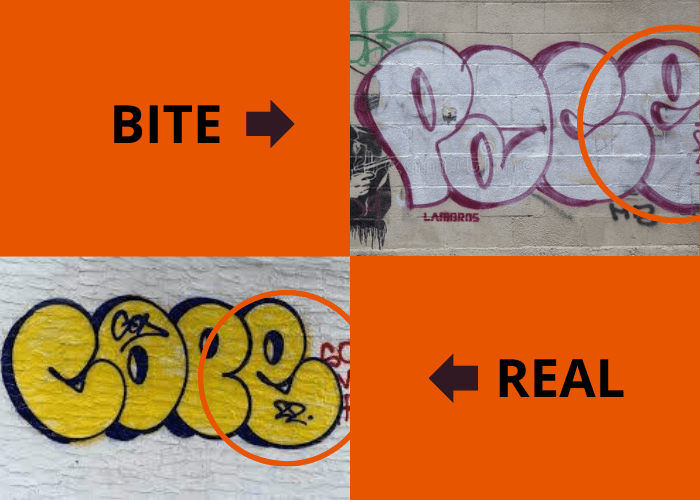
Biting someone else’s letters or style is one of the biggest mistakes graffiti writers make. Especially when they start out.
It’s unoriginal and boring. You won’t be taken seriously if you’re trying to pass off someone else’s style as your own. You’ll be called out and known as a biter.
Sure, take inspiration from other writers and adapt them to your style. But outright copying isn’t the way to go.
Instead, work on finding your graffiti style by sketching and painting. With enough practice, it should come naturally – no need to copy.
5. Not using contrasting colors
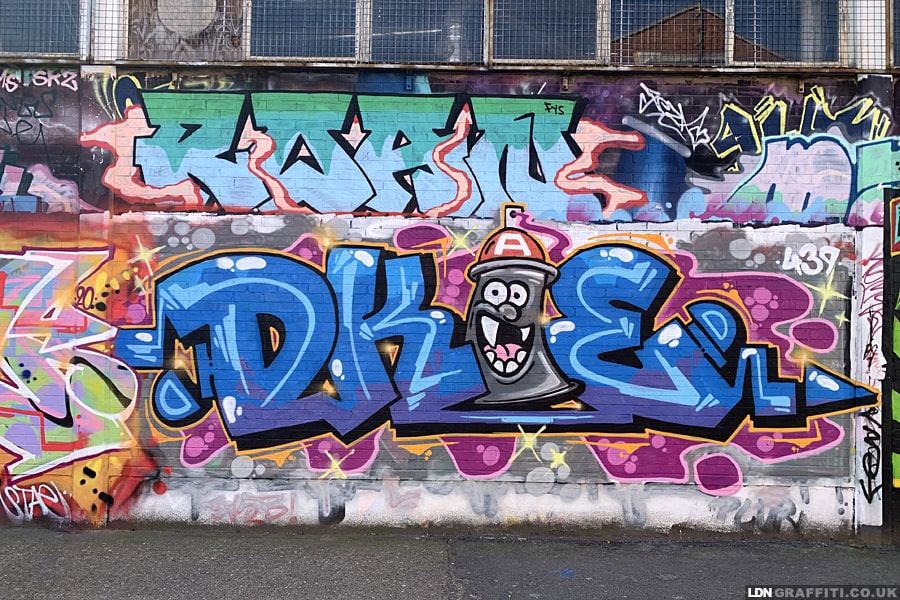
Another mistake new writers make is not using the right colors to make their graffiti pop.
Although there are no rules to the colors graffiti writers can use, it’s important that they contrast so that the letters can be easily read. Otherwise, it’ll just be background noise – other writers won’t take any notice.
Make sure you’re using a contrasting outline color to the color of your fill. Then, use a background color that brings those colors out too.
It is possible to match similar colors to make a good piece. But it’s best to nail the basics before moving on to advanced color schemes.
If you’re stuck for ideas, take a look at my post on classic graffiti colors for inspiration.
6. Throws over tags, pieces over throws, burners over pieces
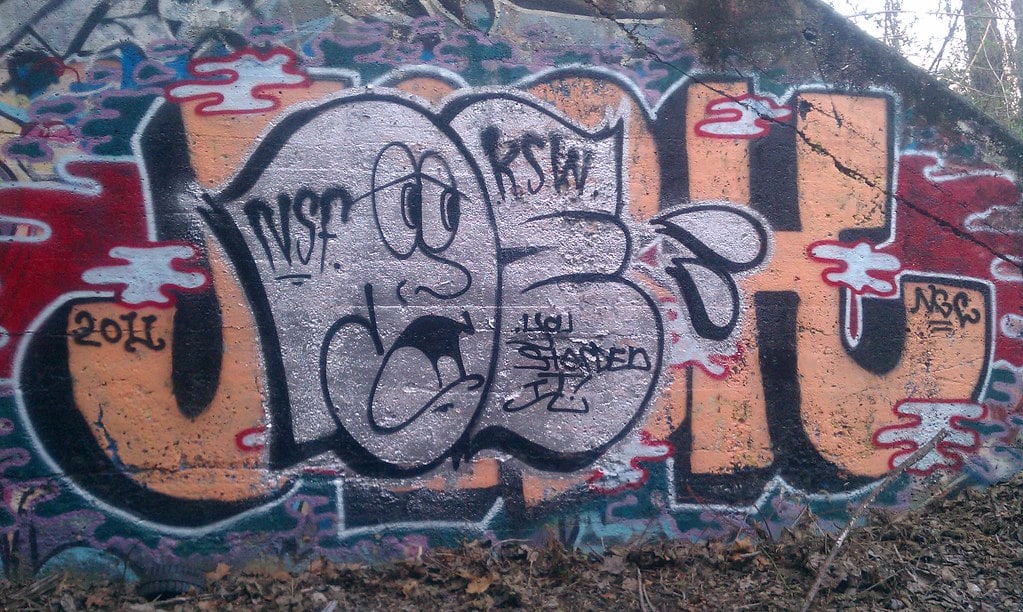
Unless you’re trying to start beef, make sure you’re graff is better than the persons before you.
One of the unwritten rules of graffiti e is that throws go over tags, pieces go over throws and burners go over pieces. As long as it’s better quality, you should be good.
But beware that if another writer has held down a good spot for years, going over it might not be a smart idea.
It’s always best to find a clean spot unless you’re at a chill or legal wall.
You can also not follow this advice at all and paint wherever you want. But if you end up in beef with the scariest writer in town, don’t say I didn’t warn you.
7. Being too slow
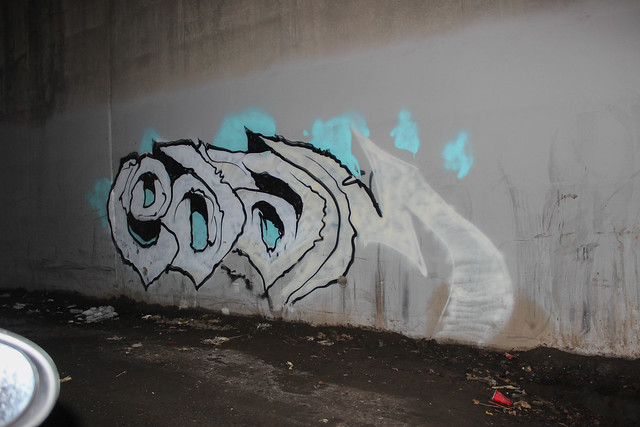
Speed is key when painting under pressure. One of the greatest skills in graffiti is making your piece look like it took hours when in reality it only took 15 minutes.
If you’re doing a piece in a place you shouldn’t be, you gotta paint fast. Ignore the small mistakes and remember them for your next piece. Sometimes fixing them isn’t worth it, and makes your piece look worse.
Know exactly what you’re doing before you hit the wall. Be quick, leaving a piece unfinished is never ideal.
If you need some tips for painting better, take a look at my post on mastering can control.
8. Adding too many accents & do-dads
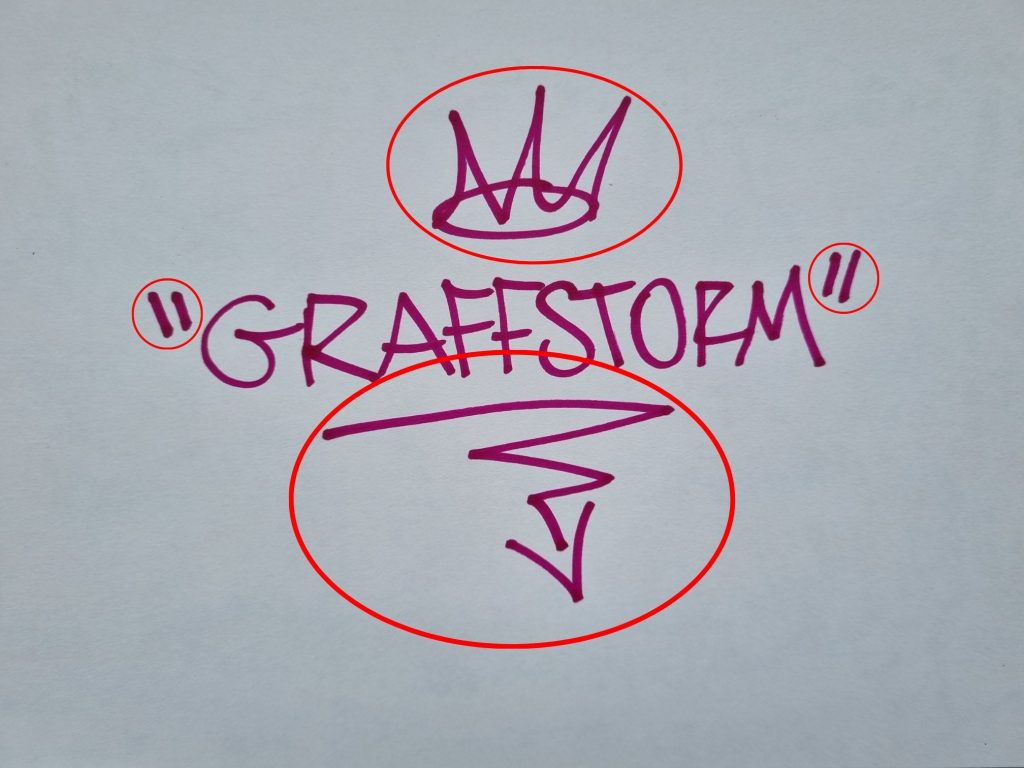
A bad habit new graffiti writers get into is adding too many accents or do-dads to their tags or pieces. This is a big mistake and can make you look like a toy.
Focus on your name and your name only. When you get more experience, you can start to experiment a bit more with details and add-ons to make your piece pop.
Plus, adding these kinds of accents means you’re spending more time painting, which can put you at risk if you need to be quick. Avoid them – it’s an obvious sign that you’re new to the game.
9. Not knowing your history
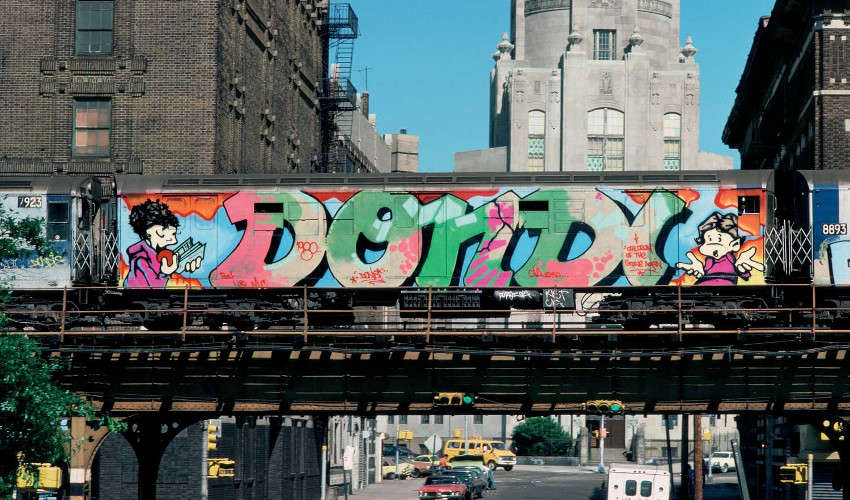
Nothing should stop you from going out and practising your graffiti in the streets. But it’s a good idea to do your homework beforehand so you can learn the roots.
For new graffiti writers, Subway Art is one of the best books to start from. It captures graffiti in its golden era throughout the early 1980s, which birthed some of the most famous graffiti artists we know today.
Every graffiti writer worth their weight has a collection of graffiti books and magazines they’ve learnt from. Take a look at my rundown of the best graffiti books to start building yours out.
10. Not sketching enough
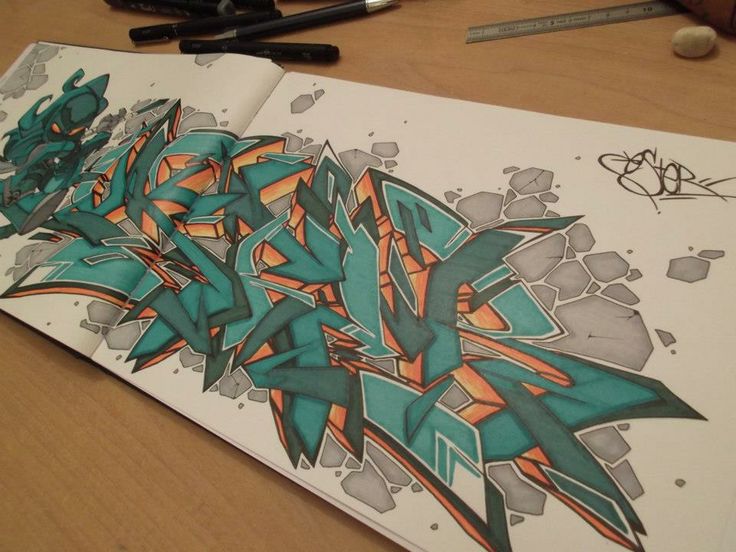
The more you sketch, the better your graffiti will be. Facts.
If you’re serious about improving your style, you need to dedicate hours – if not days – to your blackbook. It’s the best way to learn without ripping through paint.
Don’t get me wrong, you should be practising in the street too. But practising on paper will accelerate your style.
If you’re stuck for supplies, take a look at my most recommended markers for blackbook graffiti.
11. Not painting enough
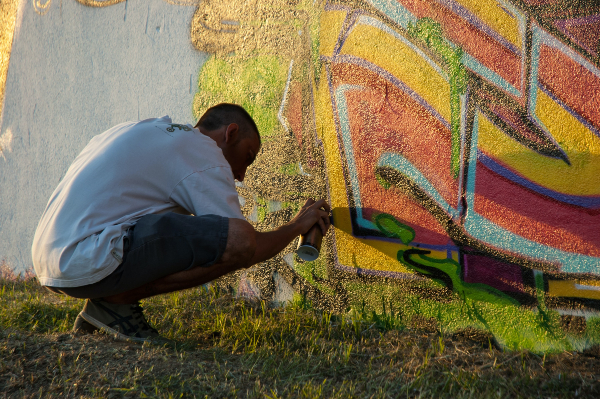
Much like a boxer who only trains and doesn’t fight, one of the biggest mistakes graffiti writers make is not getting out and painting.
You can spend hours sketching out fancy pieces in your blackbook. But if you’re not putting them out there for people to see, then your style is going to waste.
If you don’t wanna paint under pressure, find a local legal or chill wall to paint instead. That way you can put your graff into practice before hitting the streets.
If you’re stuck on which paint to pick up, I’ve put together a list of the best graffiti paint to get you started.
12. Only painting legal or chill spots
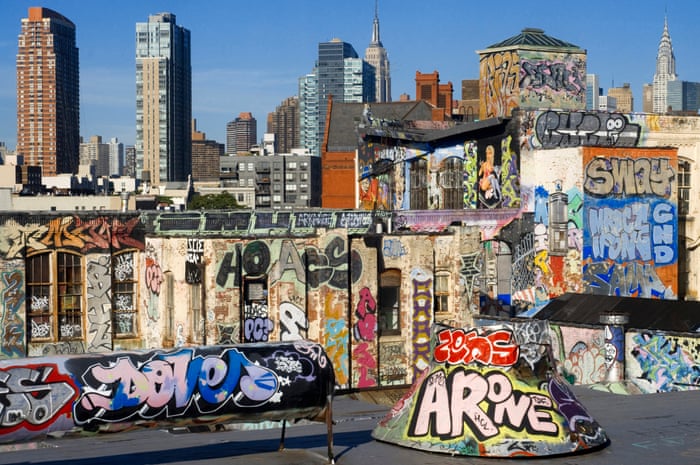
Painting without permission is the core principle of graffiti culture.
If all you’re doing is painting legal or chill spots, you won’t be taken seriously by other writers. I hate to break it to you, but that’s the reality.
Don’t make the mistake of only painting where you’re allowed to. Go out in the field, make a name for yourself and push the culture.
Not only will it improve your graffiti as you learn to paint under pressure. But you’ll see things and be taken to places you could never imagine. It’s an adventure.
Find these tips useful? Learn more about how to find your graffiti style to become a better writer.
